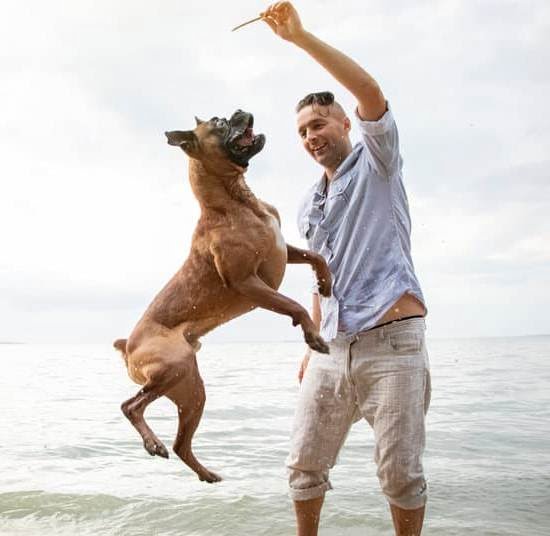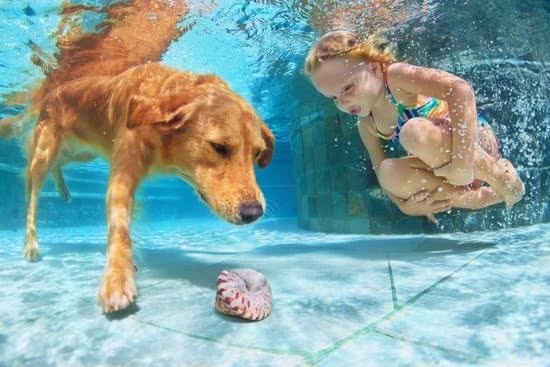Introduction
The leash is an important tool to help ensure the safety of our canine companions and an invaluable resource for their behavior training. Leash training can be beneficial for nearly any dog, especially those that have been rescued, adopted or recently transitioned into a new home. It also helps to prevent pulling on the leash, bolting out open doors and overall improving their off-leash manners.
Before beginning the process of leash training it is essential to understand the nature of your dog’s breed, character traits and energy level. A high-energy large breed such as a Labrador Retriever may require more than one long length walk per day while a small terrier might only need two short walks per week. Also take into consideration the age of your pooch as puppies develop differently than adults when it comes to learning how to successfully walk on a leash.
When starting out with leash training it is important to remain consistent in order to minimize frustrations for both you and your pup. Establish certain rules such as not allowing constant pulling on the leash and mandating successful heel position walking at all times prior to rewarding behavior with words of encouragement or treats. As you progress remember that patience is key! Make sure you are keeping sessions brief yet rewarding otherwise you risk boredom and unruly behaviors from your four-legged friend.
Leash training takes time but will ultimately pay off when behavior improvements begin showing. Just be sure to stay consistent, patient, provide lots of verbal positive reinforcement along with rewards so both parties can happily enjoy each walk outside!
Assessing Your Dog’s Needs
Before training a dog to get leashed, it is important to assess your individual dog’s needs. Every dog has its own personality and temperament traits that can affect how they respond to the process of getting leashed. Additionally, some dogs may have fears or past experiences that can lead them to be more resistant in regards of leashing. It is important for you as an owner to have patience and understanding as you consider the bond you have formed with your furry companion; this bond will be a foundation for any type of training or behavior modification that takes place. Moreover, observing your dog’s reactions and body language can help you identify areas that could use improvement when learning how to get leashed. Keep calm while attempting to leash your pup and don’t forget rewards! With positive reinforcement, rewards and consistency in techniques, your pup will soon become comfortable and confident with getting leashed.
Designing Your Training Plan
Once you have an understanding of effective behavioral techniques and rewards, it is important to design a training plan that outlines what steps can be taken to train your dog to get leashed. Start with introducing the concept of the collar by allowing your dog to explore, sniff and play with it while providing positive reinforcement. It is essential to associate positive experiences with the collar in order for your dog to learn how to become accustomed to being on a leash.
You may choose to teach verbal commands such as “collar” or “put on” when getting your pup ready for a walk. Before going for walks, practice getting your dog used to putting his or her front leg through the collar (while giving praise and rewards). Over time, gradually give more commands for the pup such as adding hind legs and tightening the buckle before rewarding them. Finally, start teaching heel commands so that they know how to stay on the leash while walking next to you.
In addition, utilizing appropriate rewards is imperative in order for a dog-owner relationship based on trust and cooperation rather than fear and dominance. Food treats can be used in higher frequency until your pet understands the connection between command and behavior; at which point you can use less food treats and utilize verbal compliments as reward instead. During this training process it is important not only allow required amount of breaks but also provide plenty of positive reinforcement when showing mastery of their new skills. By emphasizing praise over punishment, your pup will better understand their role while enjoying each training sessions even more.
Desensitizing Your Dog to the Leash
When you first introduce your dog to the leash, it should be a positive experience. Begin by introducing them to it without connecting the leash to their collar. Let them explore and become familiar with it. Make sure that this is a joyful experience by giving your pup treats and lots of verbal praise. This will help build positive associations with the leash, getting your pup off on the right foot for future training sessions.
Once your pup is comfortable with exploring around the leash, you can start to attach the leash to their collar and let it dangle free. Have some yummy treats available while they get used to having something around their neck. Praise your pup as they explore in this way and reward them each time they come back or stay close so that they’re learning that proximity earns rewards. You can also periodically have them move around while wearing the leash attached until they are used to doing so which will make future walks easier. In addition, try engaging in some obedience activities such as sit or down while wearing the leash too — this helps reinforce these skills and makes walking together simpler in the long run.
Achieving Basic Training Goals
Before you train your dog to get leashed, it is important that they know some basic commands. Teach them to sit and stay in one place as this will be important when attaching the leash. The command “come” is also essential so that if your dog runs away, you can call them back. Additionally, teaching your dog to heel on a loose leash is important so that they don’t pull when running around.
To begin training your dog, prepare a good reward for them such as treats when they cooperate willingly. Start off by getting their attention and then attach a leash to their collar or harness without needing their help. Then ask them to sit still while holding the leash out of reach from them. Once they understand what behavior is necessary here, start slowly introducing the walk command with encouragement and rewards every time your dog responds positively. At first keep the walks fairly short, praising them afterwards and adding an extra treat for responding quickly and obediently during a longer walk.
Once you’re confident that your pet has grasped the basics of leashing up, add more distractions like having someone else interact with your dog or bringing another pet into the picture; introduce those aspects gradually and remain patient with the process. Finally, give plenty of positive reinforcement while working on leashing up so that it becomes an enjoyable experience each time!
Building on Basics
Leashing a dog may not come naturally, and it’s important to practice proper techniques in order for your dog to learn how to behave when on a leash. Setting realistic expectations and understanding the basics of positive reinforcement will help you form effective techniques for leashing your pup.
The first step is making sure that your dog is comfortable with basic cues such as sitting and staying put. This way, once the leash is attached, they understand simple commands before you determine boundaries and progress to more advanced walking strategies. While training them at home with treats, luring or shape-training will give them an understanding of what you are asking each time they are leashed. With repetition and praise, they will begin to pick up leashing quickly as long as it is followed by something rewarding like petting or treats.
The next step involves going out on walks where you can begin teaching them the use of hand signals while on a leash. This allows your dog to learn how to stay in line while being leashed but also reinforces the idea of reward after completing desired behaviors; this will prevent disruption while on a leash when done in combination with creative commands such as name calling and whistle blowing.
Lastly, using toys or training weights for reward provides further association between expectation and reward as does wearing a no-pull harness when outside for walks instead of a standard collar setup. These tips plus determination from both owner and pup alike ensures successful leashing.
Establishing Consistency
There are many potential mistakes to avoid when training your dog to get leashed. One big mistake is failing to establish consistency. Consistency is key for any successful animal training experience. Without consistency, the dog may become confused and unable to stay focused. Make sure you use the same commands every time you train your dog and provide rewards that are consistent with his behaviors. For example, give him a treat when he correctly follows a command you have given or sits patiently when asked. If you switch around how you reward him every time, it will make it difficult for him to understand what will be rewarded and what won’t.
Another mistake many people make when trying to leash train their dogs is not practicing often enough and not dedicating enough time or effort into their training sessions. Dogs learn best through repetition and it takes some time to ingrain certain behaviors into their memory. So practice makes perfect! Set aside regular times in the day devoted solely to leash training, even if it is only for 10 minutes. Dedicating this amount of time each day ensures that your pup masters the command quickly, making it easier for both of you in the long run. Finally, do not forget about verbal praise during each session—it reassures the pup that he is on the right track and motivates him even further!
Troubleshooting
For many dogs, getting leashed can be a difficult behavior. This is especially true for puppies who may be easily distracted and tend to run away or even become aggressive towards their handlers when asked to get leashed. Additionally, over time dogs may learn and display anxiety behaviors related to the activity of getting leashed. In order to properly train a dog how to get leashed, there are several practical steps that can be taken by the handler.
The first step in training a dog how to get leashed is to ensure that all encounters with the leash are pleasant experiences. Allow your pup plenty of time to explore the leash before placing it on them so they grow accustomed to it being around as well as handling it in their mouths if they choose. During the actual process of putting on the leash, reward the pup with treats and positive reinforcement each time they stay quiet and cooperate until eventually they have learned the behavior properly.
If your pup is exhibiting any form of negative behaviors related to getting leashed, work on building trust with them before introducing them back into this particular activity. Do not attempt to force them if any signs indicate aggression or fear, instead allow for extra steps as needed when you begin working with your pup again on getting leashed. Incorporate longer warm-up times prior to placing the leash on such as taking a walk around the block or throwing a toy for playtime – this helps ease any tension and builds trust overtime between yourself and the pup. Furthermore, consistently rewarding positive behavior from your dog each day in different activities will create an overall positive outlook towards all types of training exercises which leads into having manageable expectations for future behavior when it comes time for getting leashed.
The Rewards of Training
When it comes to training your dog, teaching them how to get on a leash is an important part of their development. It not only gives them the ability to explore the world with you, but it also helps keep your pup safe from harm’s way.
Making leash-time enjoyable for both you and your pup requires a little patience and consistency. Start by introducing the leash itself; let your pup sniff around and become comfortable with the item. Praise them for any positive interaction, each small step forward should be treated as success! You can also try offering rewards like treats to encourage pawing at the object or even wearing it.
Once they have grown accustomed to the leash, its time to begin teaching commands such as “sit” or “come”. Every time they obey a command successfully reward them with lots of praise and a treat if possible. As your puppy recognizes what “leashing up” means they will develop a positive association towards long walks and trips outside – Making getting leashed up something they look forward too!
Finally, don’t forget to celebrate successes! Congratulate yourself and your pup when he/she masters commands and follows directions regarding getting leashed up. This will teach them that following these steps results in rewarding experiences helping ensure that leash-time remains an enjoyable activity going forward!
Conclusion
The process of training a dog to get leashed can require patience, commitment and consistency. Every dog learns differently and each one may need different approaches during the training process. Not all dogs will learn things in the same amount of time, but with practice, patience, commitment and consistency, any dog can be trained to accept wearing a leash.
Training a dog to accept getting leashed is an important part of establishing a good bond between you and your pet. By investing this time in your pet you are creating a strong relationship that will benefit both of you for years to come. With consistent reinforcement and reward your dog will learn the desired behavior quickly. Patience is essential in training your pup as it will take some time for him/her to adjust to the new leash routine.
Commitment is also key when training your dog as repetition is often necessary to achieve success. Changing up your tactics while keeping the end goal in focus can be helpful in finding an approach that works best for both you and your pup. Consistency is paramount; make sure that you are practicing these behaviors consistently over time so that your dog develops muscle memory and gets comfortable wearing his/her leash regularly.
When all of these elements — patience, commitment and consistency — are implemented into training, there are many positive benefits possible for both owner and pooch alike. A stronger bond can form between the two of you when long-term goals become reality through determination and focusing on what’s best for each party involved. On top of it all, practicing proper leash manners can result in fewer problems outside of the home that may otherwise arise from having an untrained pup running around off-leash. Reflected on these benefits keeps motivation high!

Welcome to the blog! I am a professional dog trainer and have been working with dogs for many years. In this blog, I will be discussing various topics related to dog training, including tips, tricks, and advice. I hope you find this information helpful and informative. Thanks for reading!





